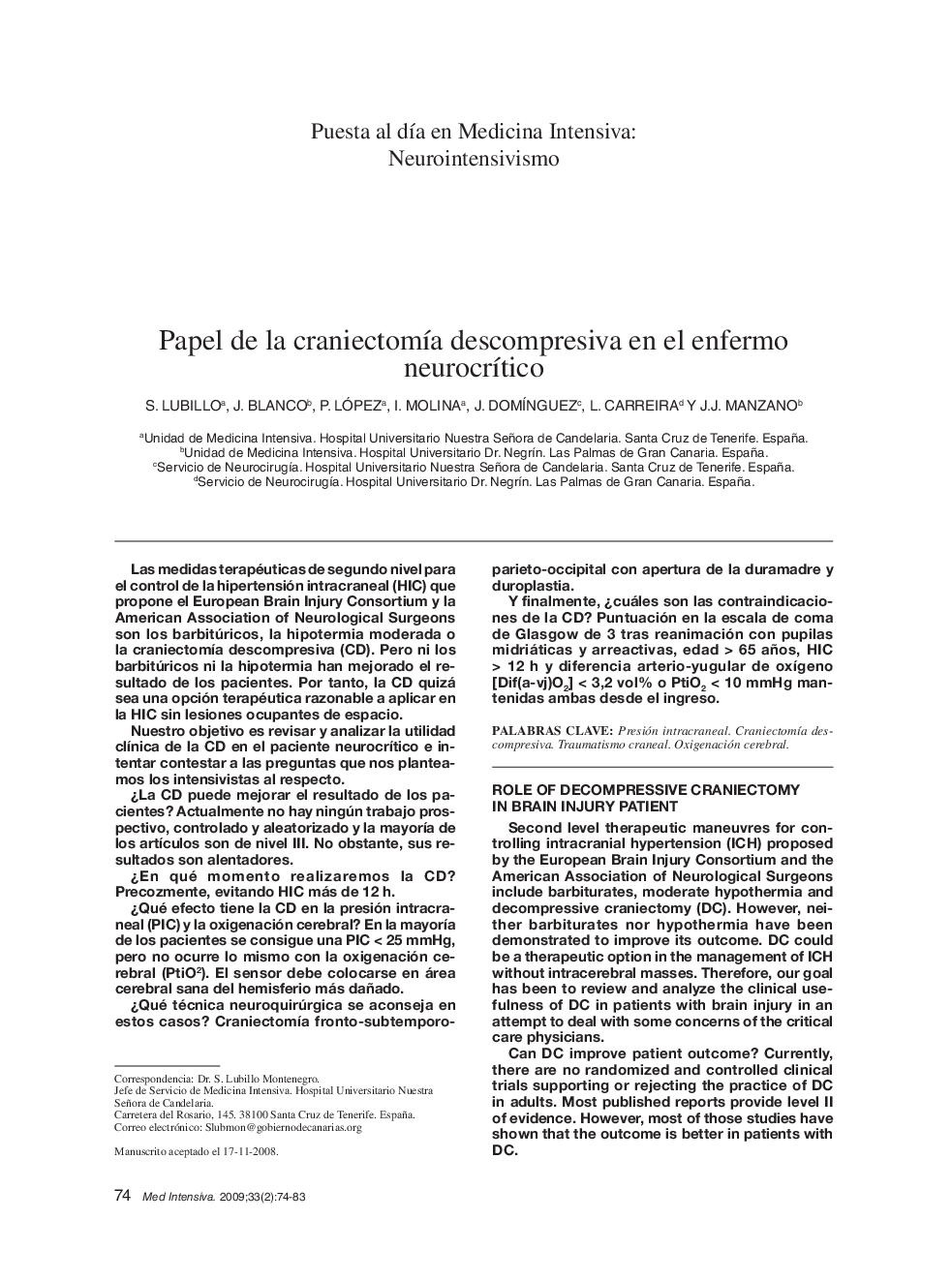| Article ID | Journal | Published Year | Pages | File Type |
|---|---|---|---|---|
| 3113769 | Medicina Intensiva | 2009 | 10 Pages |
Las medidas terapéuticas de segundo nivel para el control de la hipertensión intracraneal (HIC) que propone el European Brain Injury Consortium y la American Association of Neurological Surgeons son los barbitúricos, la hipotermia moderada o la craniectomía descompresiva (CD). Pero ni los barbitúricos ni la hipotermia han mejorado el resultado de los pacientes. Por tanto, la CD quizá sea una opción terapéutica razonable a aplicar en la HIC sin lesiones ocupantes de espacio.Nuestro objetivo es revisar y analizar la utilidad clínica de la CD en el paciente neurocrítico e intentar contestar a las preguntas que nos planteamos los intensivistas al respecto.¿La CD puede mejorar el resultado de los pacientes? Actualmente no hay ningún trabajo prospectivo, controlado y aleatorizado y la mayoría de los artículos son de nivel III. No obstante, sus resultados son alentadores.¿En qué momento realizaremos la CD? Precozmente, evitando HIC más de 12 h.¿Qué efecto tiene la CD en la presión intracraneal (PIC) y la oxigenación cerebral? En la mayoría de los pacientes se consigue una PIC < 25 mmHg, pero no ocurre lo mismo con la oxigenación cerebral (PtiO2). El sensor debe colocarse en área cerebral sana del hemisferio más dañado.¿Qué técnica neuroquirúrgica se aconseja en estos casos? Craniectomía fronto-subtemporo-parieto-occipital con apertura de la duramadre y duroplastia.Y finalmente, ¿cuáles son las contraindicaciones de la CD? Puntuación en la escala de coma de Glasgow de 3 tras reanimación con pupilas midriáticas y arreactivas, edad > 65 años, HIC > 12 h y diferencia arterio-yugular de oxígeno [Dif(a-vj)O2] < 3,2 vol% o PtiO2 < 10 mmHg mantenidas ambas desde el ingreso.
Second level therapeutic maneuvres for controlling intracranial hypertension (ICH) proposed by the European Brain Injury Consortium and the American Association of Neurological Surgeons include barbiturates, moderate hypothermia and decompressive craniectomy (DC). However, neither barbiturates nor hypothermia have been demonstrated to improve its outcome. DC could be a therapeutic option in the management of ICH without intracerebral masses. Therefore, our goal has been to review and analyze the clinical usefulness of DC in patients with brain injury in an attempt to deal with some concerns of the critical care physicians.Can DC improve patient outcome? Currently, there are no randomized and controlled clinical trials supporting or rejecting the practice of DC in adults. Most published reports provide level II of evidence. However, most of those studies have shown that the outcome is better in patients with DC.When should DC be performed? It should be performed early to prevent ICH from occurring more than 12 hours.What are the effects of DC on intracranial pressure and brain oxygenation? In most patients, ICP can be maintained below 25 mmHg after a DC. However, to improve brain oxygenation (PtiO2), the probe must be placed in the healthy area of the most severely damaged cerebral hemisphere.What is the suggested surgical procedure? Frontal-subtemporal-parietal-occipital craniectomies, including enlargement of the dura by duroplasty.And finally, what are the current contraindications of DC? Glasgow Coma Scale score 3 points post-resuscitation states with dilated and arreactive pupils, age > 65 years old, ICH > 12 hours, persistent (a-yv)DO2 < 3.2% or PtiO2 < 10 mmHg maintained from the moment of admission.
